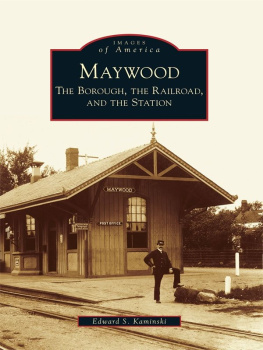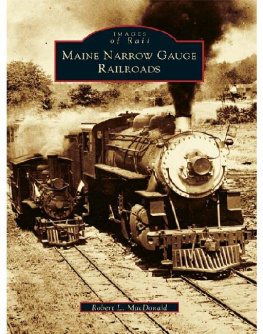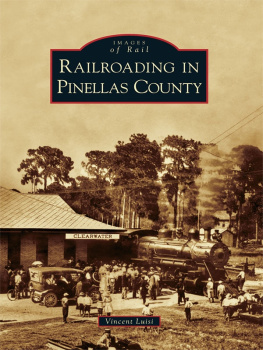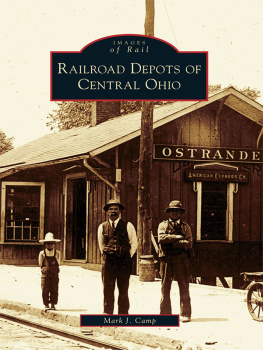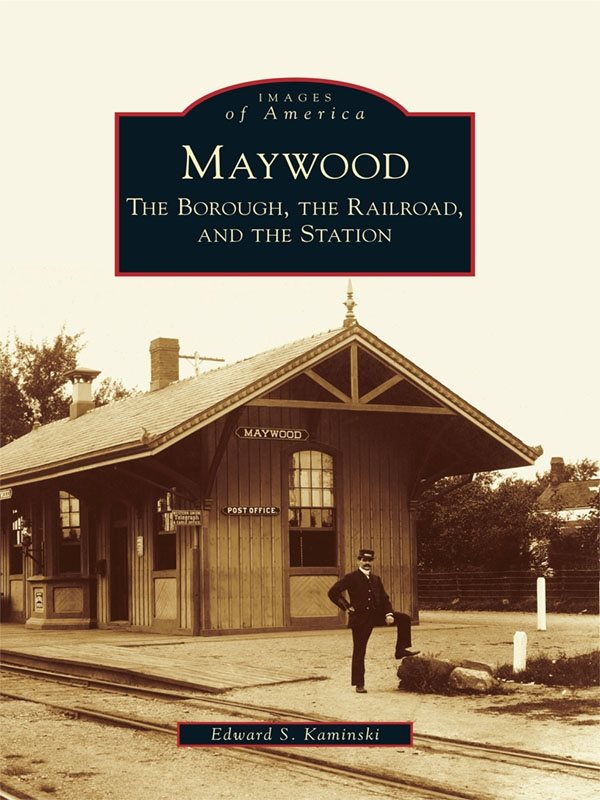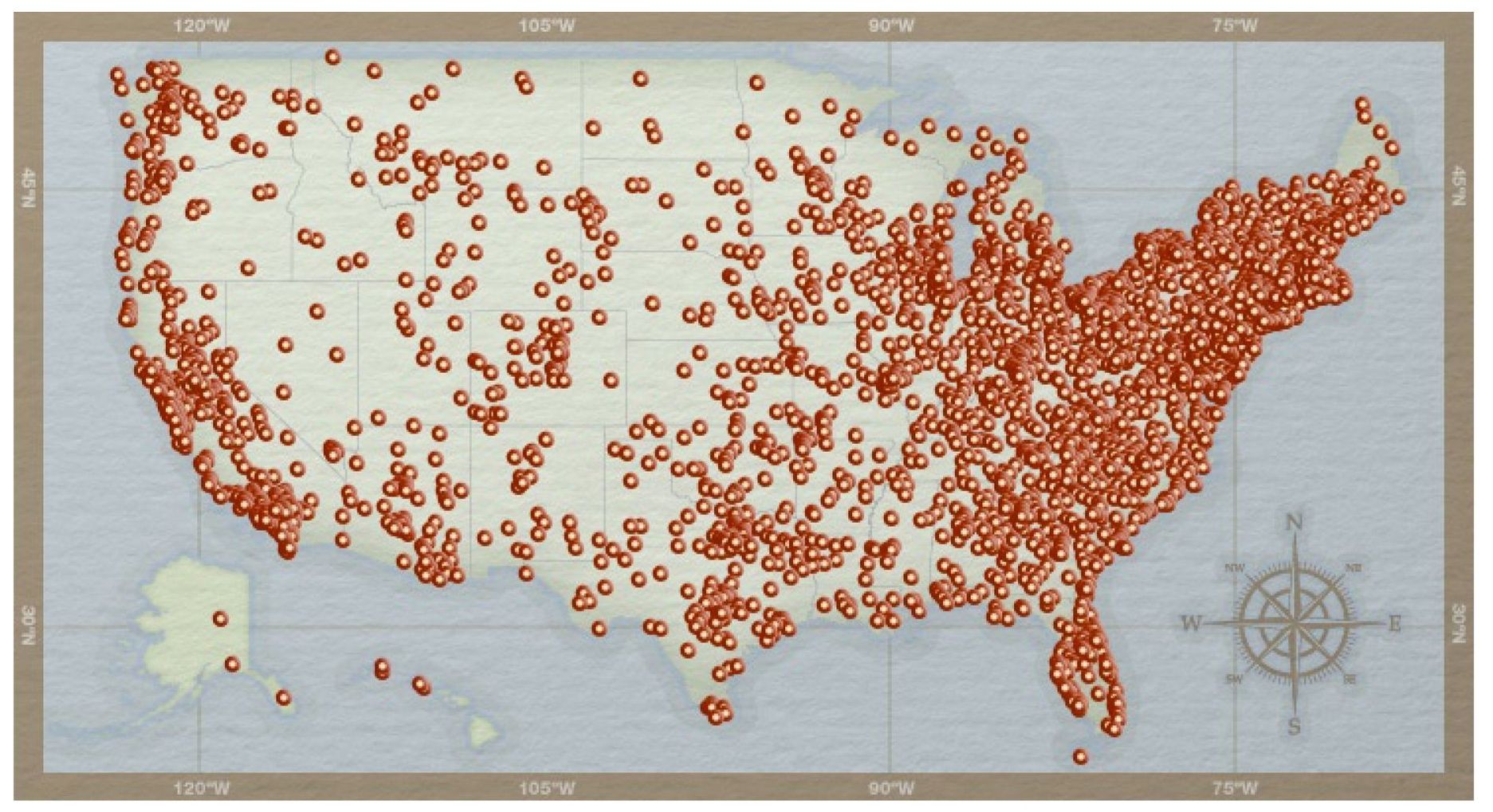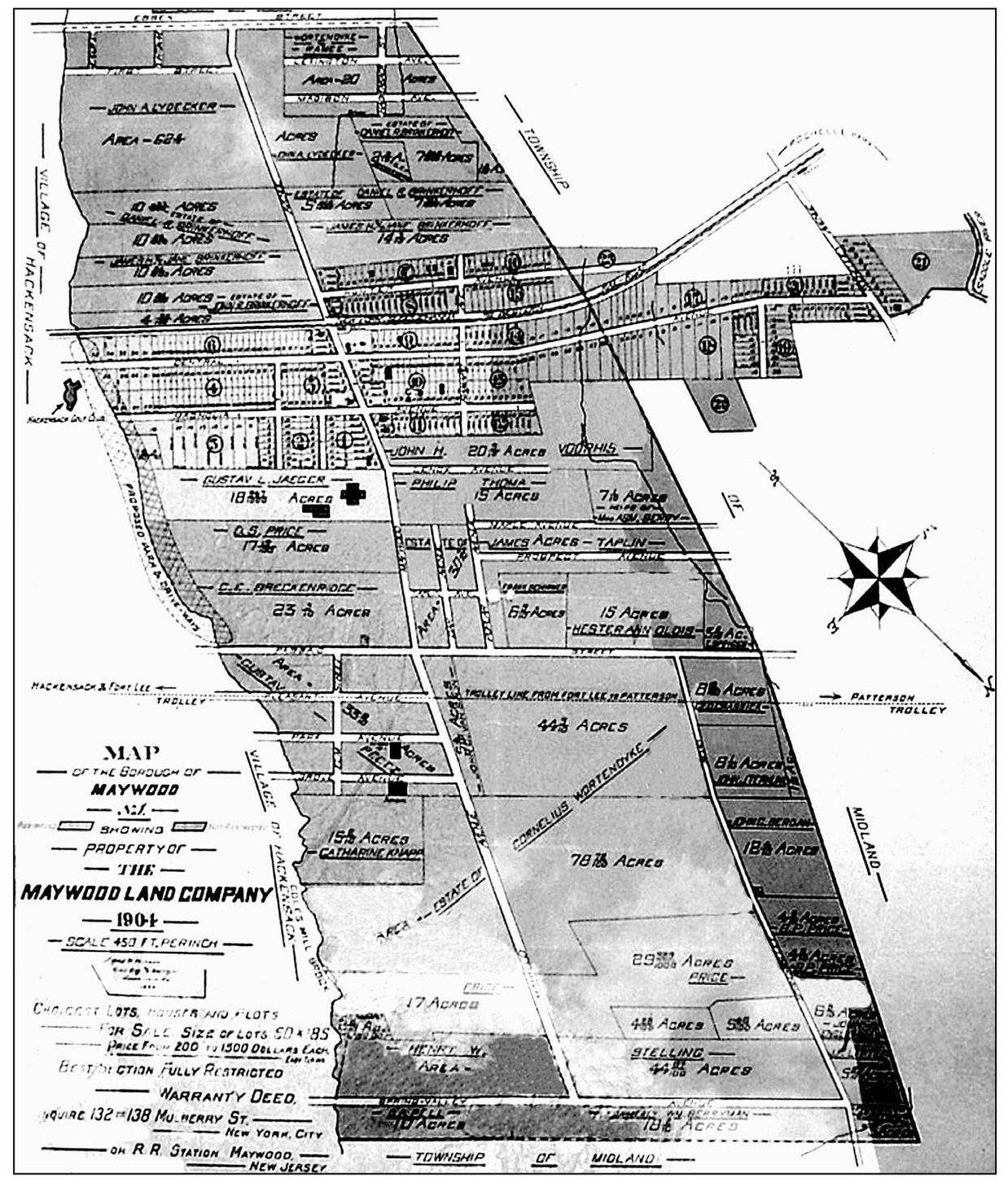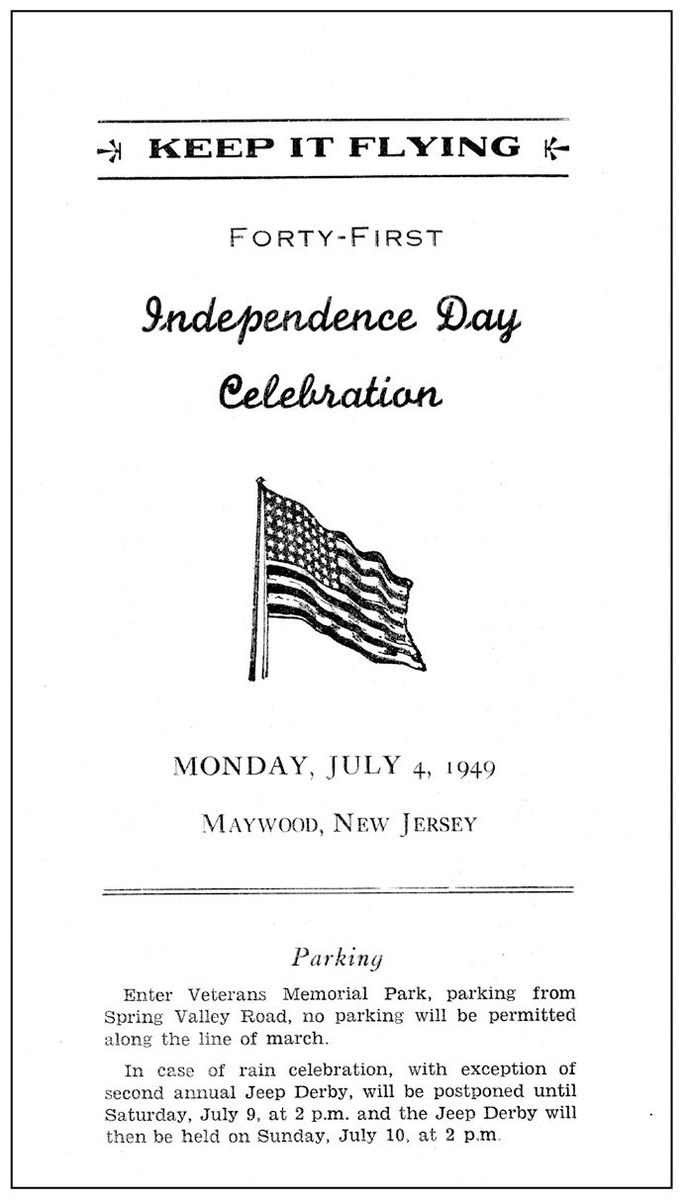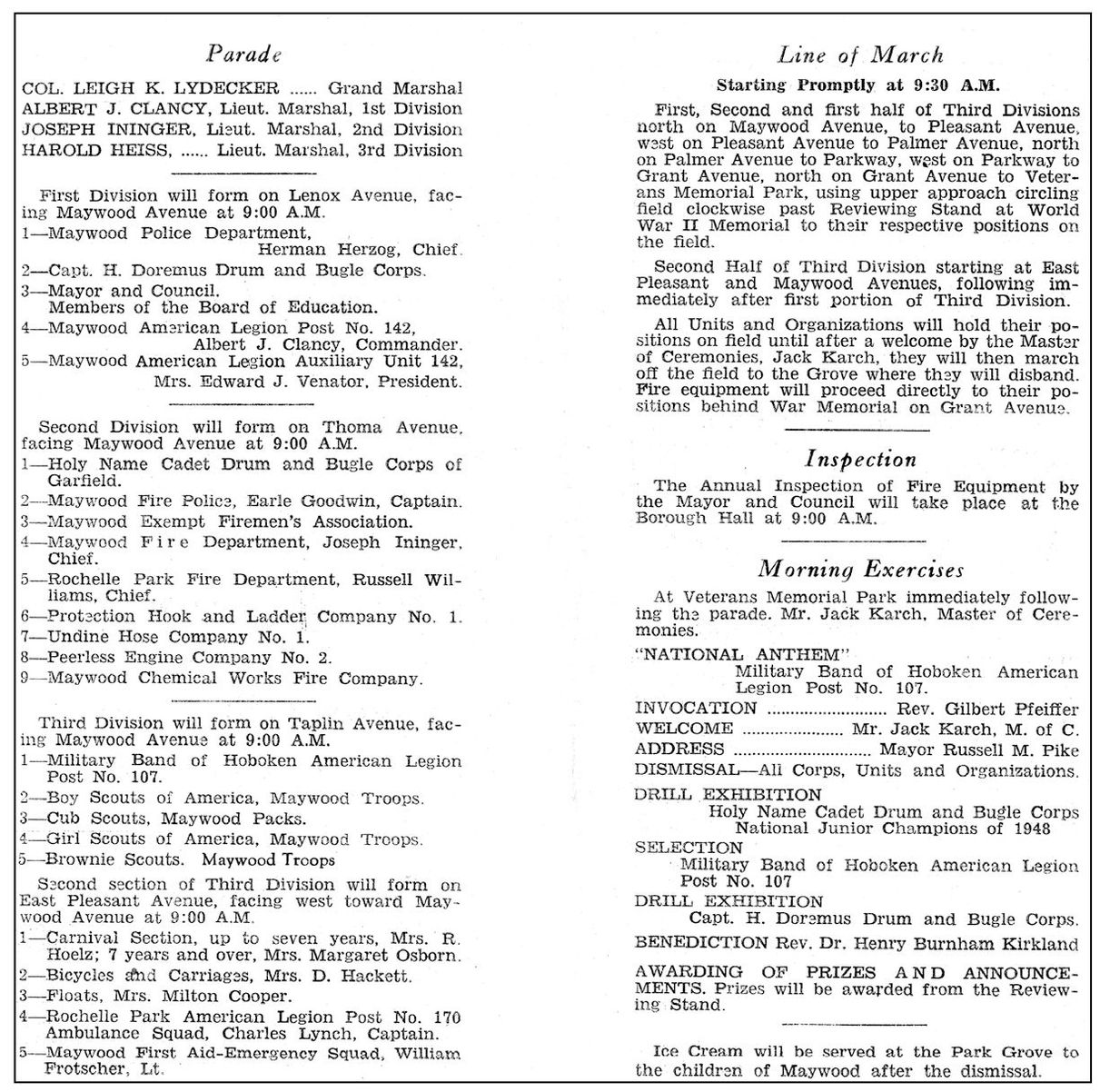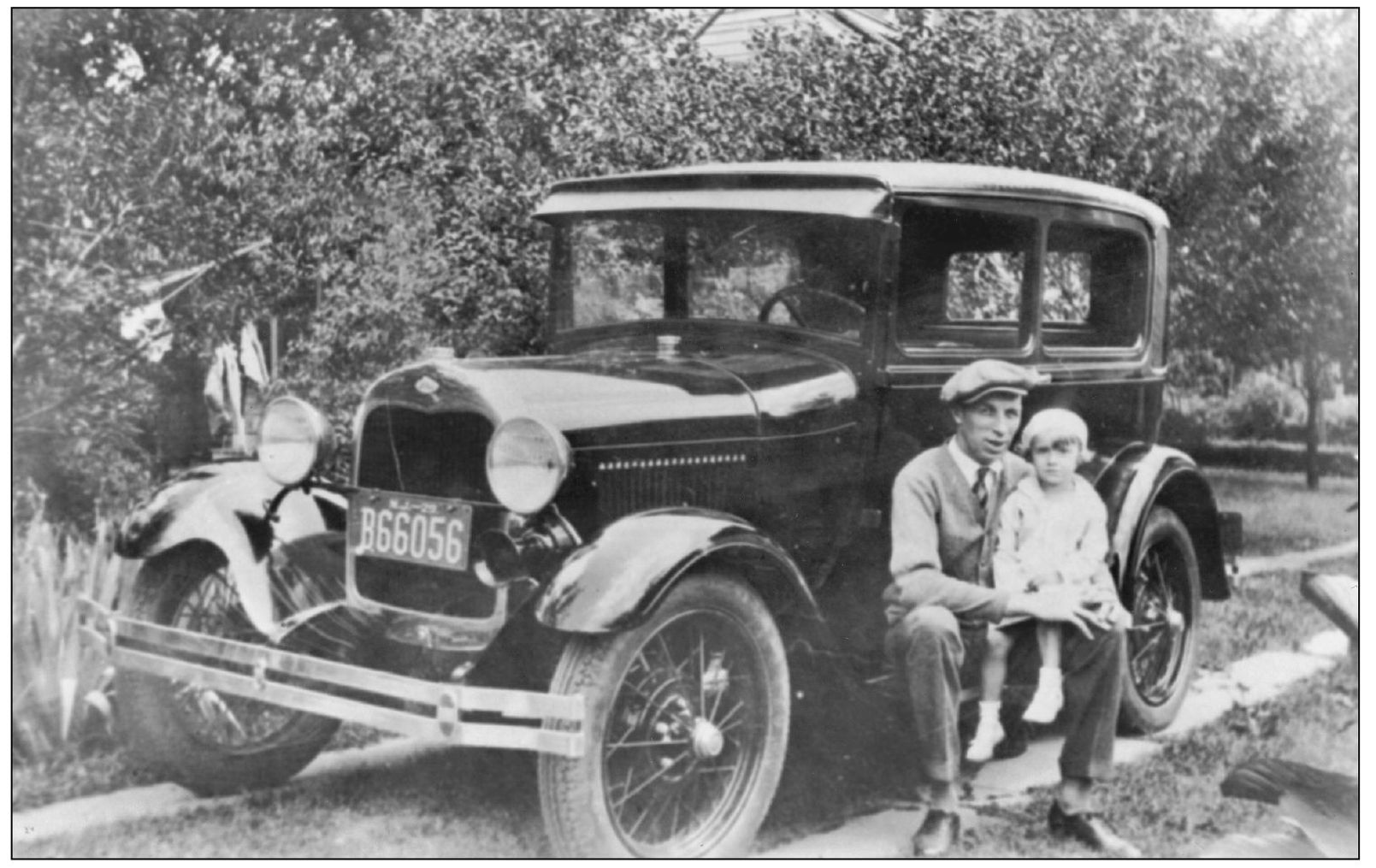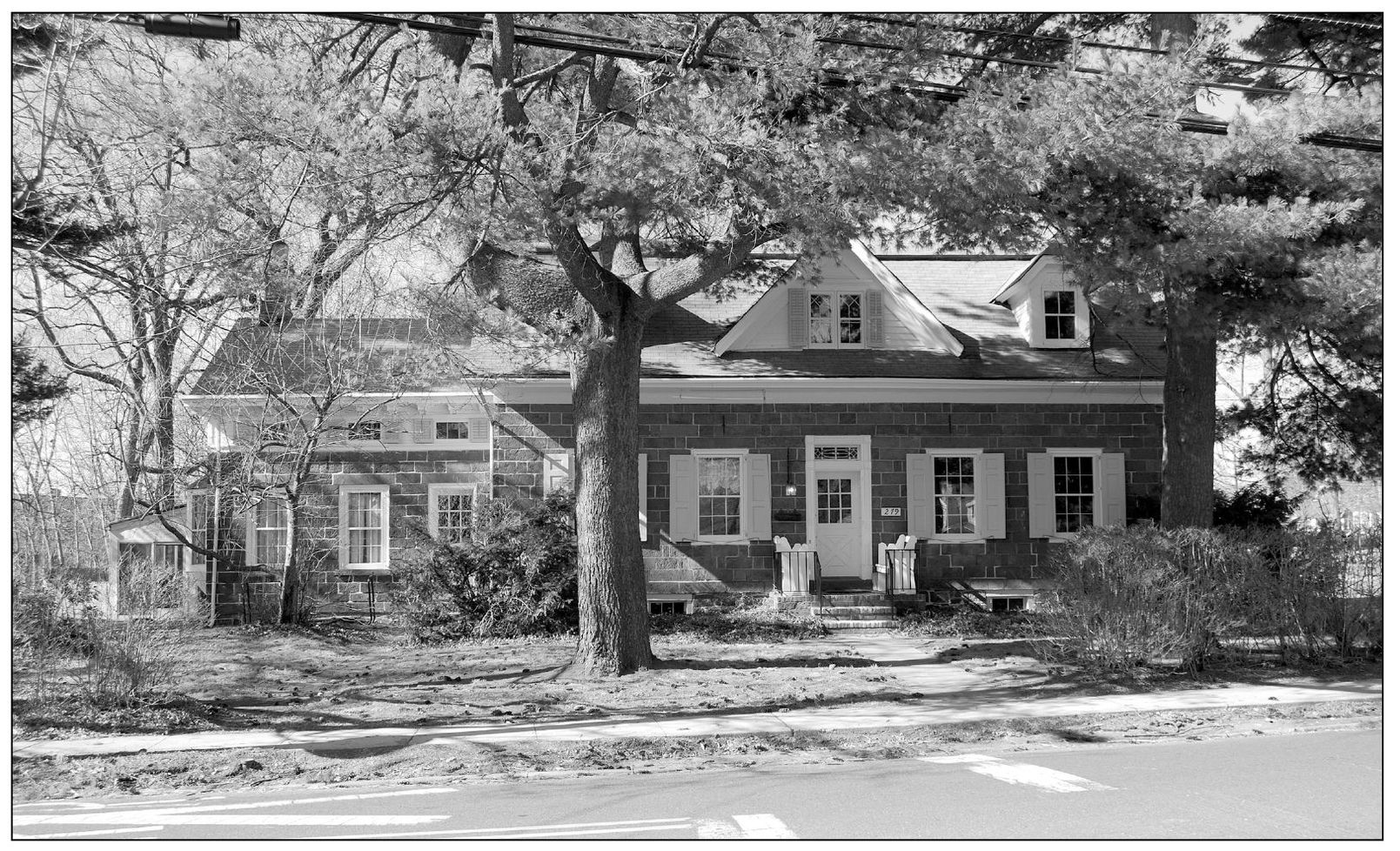ACKNOWLEDGMENTS
In writing this book, I had the good fortune that a great many images and information on Maywood and the New York, Susquehanna, and Western Railroad had been preserved by numerous individuals who were more than willing to share their memories and collections of material. Assisting in the process was the fact that throughout Maywoods early history, a variety of buildings, streets, homes, businesses, and churches were the subject of postcards, and many of these scenes have been preserved.
As with any book that requires research, it is never accomplished by just one person. I would like to thank the photographers and sources of photographs, postcards, illustrations, and information on the subject matter, including George Berisso; Gordon Breslow; Thomas J. Callan; Mary Conine; County of Bergen Department of Cultural and Historic Affairs Department; Wayne Daniels; Douglas Dezso; Dr. Timothy Eustace; Dorothy Fenniman; Jennifer Gardner; Matthew Greco; Johnson Public Library of Hackensack; David Hoag; Phyllis Hoag; Peggy Hoag Lackner Jensen; James Lackner; Barbara Miller; Henry Miller; LaMarr M. Kelley; John Krause; Mark F. Masters; Maywood Station Historical Committee; Maywood Station Museum; Maywood Public Library; John Meyers; Timothy Moses; New York Public Library; New York, Susquehanna, and Western Railroad; New York, Susquehanna, and Western Technical and Historical Society; Thomas Murphy; Cesare Parodi; Jean Pelligra; Robert P. Pisani; Railroad Avenue Enterprises; Barbara Logue Reynolds; Patrick J. Reynolds; Len Rubin; Ted Rubin; Keith Smollin; Steve Tamayne; Jack White; and Walter E. Zullig Jr.
I would like to express my gratitude to retired Maywood Police chief Patrick J. Reynolds, who encouraged me to take on this project and contributed many photographs from his collection as well as others taken by him. He also lent various old Maywood Annual publications and issues of the Our Town newspapers that provided much insight into the subject matter. I would like to also thank Erin M. Rocha of Arcadia Publishing, who greeted the project with enthusiasm, and Cynthia Sansone for proofing the text. As always, a big thank you and all my love goes to my wife, Rosemarie, and our three daughters, Kristen, Kaitlyn, and Kayleigh, for their patience and support during the process of gathering materials for and writing this book.
ABOUT THE AUTHOR
Edward S. Kaminski is a widely known historian who has held a lifelong interest in railroads and their histories. He is an avid photographer of contemporary railroad scenes, and many of his images have appeared in leading prototype railroad magazines, model railroad magazines, books, annual reports, brochures, newspapers, Web sites, and calendars. In addition, he has had numerous articles published in magazines and occasionally lectures on history-related topics at seminars and for historical societies. He is employed by American Railcar Leasing (formerly ACF Industries), a lessor of railroad freight cars, as a district sales manager for the East Coast and also serves as a consultant for a leading model railroad manufacturer. He is a graduate of Rutgers University with a bachelors degree in history.
On May 29, 2002, Kaminski formed the Maywood Station Historical Committee, a division of the New York, Susquehanna, and Western Technical and Historical Society, in an effort to save the historic New York, Susquehanna, and Western Railroad station in Maywood from impending demolition. He has served as chairman of the organization since its inception and has helped guide the restoration of the station, formation of its museum, and associated restoration projects. Maywood Station is now listed on both the National Register of Historic Places and the New Jersey Register of Historic Places. Addition information about the Maywood Station Historical Committee can be found on its Web site at www.maywoodstation.com and on the New York, Susquehanna, and Western Technical and Historical Society Web site at www.nyswths.org .
This is the authors seventh book. He has written five books published by Signature Press, including American Car & Foundry Company, A Centennial History 18991999 ; Magor Car Corporation ; American Car & Foundry Tank Cars, 18651955 ; Pullman-Standard Freight Cars, 19001960 ; and Billboard Refrigerator Cars . He has also written a self-published book, The Gregg Company LTD., A Centennial History 19032003 .
Kaminski is a lifelong resident of northern New Jersey, where he lives with his wife, Rosemarie, and their three daughters, Kristen, Kaitlyn, and Kayleigh.
Find more books like this at
www.imagesofamerica.com
Search for your hometown history, your old
stomping grounds, and even your favorite sports team.
One
THE BOROUGH OF MAYWOOD
This Maywood Land Company property map of the borough of Maywood dates from 1904. The Maywood Land Company operated offices at 132138 Mulberry Street in New York City and at Maywood Station. All landholders of record were identified on this map. (Courtesy of Thomas Murphy.)
The cover of the 41st Independence Day Celebration program from July 4, 1949, is shown in this view. The annual Fourth of July parade first began in 1909, and the tradition continues in Maywood to this day. (Courtesy of Maywood Station Museum collection.)
Inside the July 4, 1949, Independence Day Celebration program was a listing of the various participants and events that were held. A fixture for many years in the parade was Col. Leigh Lydecker, a Maywood resident whose family arrived in Maywood in 1867. Lydecker was grand marshal from 1912 to 1968, and many older and former residents of Maywood will remember him leading the parade with one of his horses. (Courtesy of Maywood Station Museum collection.)
D. Wesley Hoag and his daughter Peggy are shown on August 4, 1929, sitting on their Ford Model A in their driveway at 419 Palmer Avenue. D. Wesley Hoag was a Maywood volunteer fireman from 1930 to 1970 and was employed as an engineer/fireman on the New York, Susquehanna, and Western Railroad from 1916 to 1961. (Courtesy of Peggy Hoag Lackner Jensen.)
The 1700-built Dutch Colonial sandstone Brinkerhoff house at 279 Maywood Avenue still resembles many of its original features although it has had some detail changes over the years, especially in the removal of the porch area and the window trim. In the 1890s, Ernst Bilhuber, manager of the Maywood Art Tile Company, resided in this home. This view was taken on February 15, 2009. (Photograph by author.)

